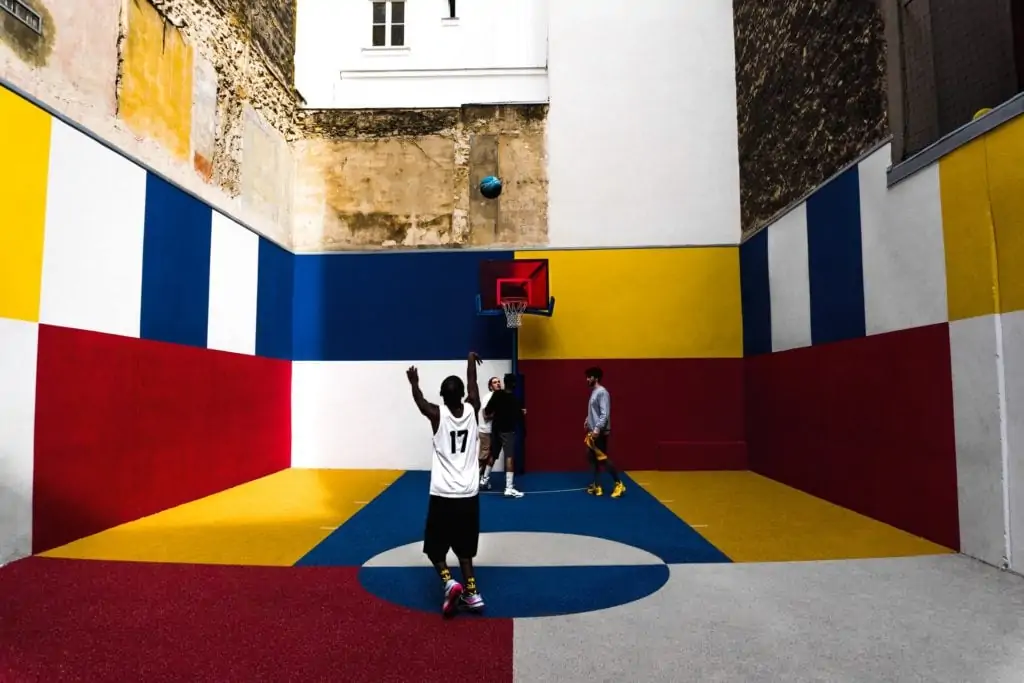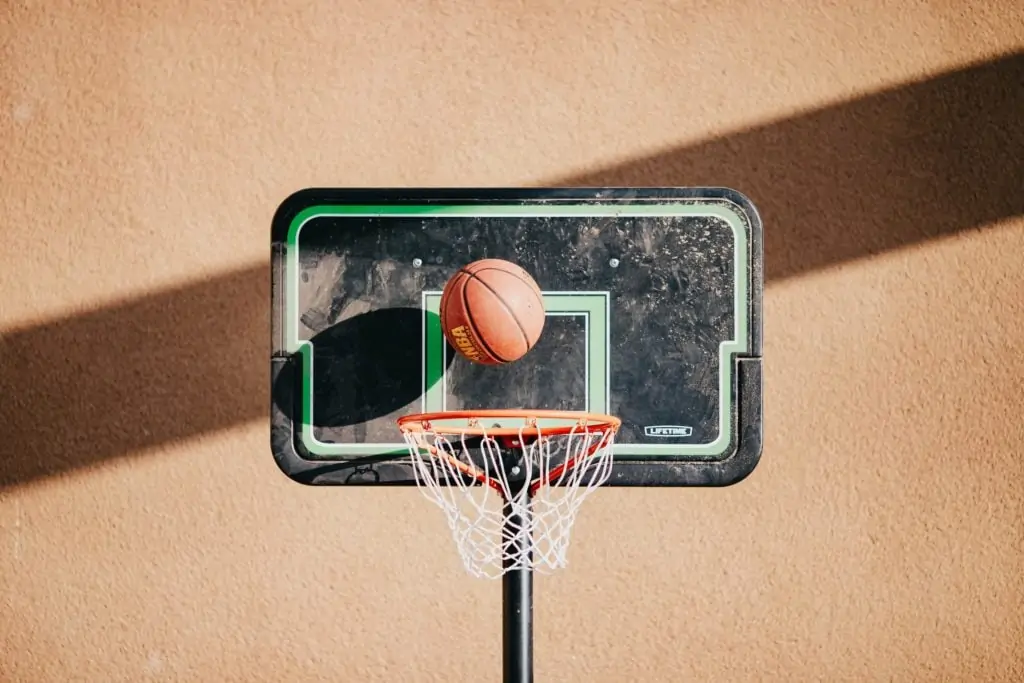Would you like to know what is the five second rule in basketball? If you are a basketball player or fan, surely you would have heard someone mention a five-second violation. These rules are some of the many basketball time rules. Because there are different five-second violations, understandably, you may have questions on how this rule works.
As basketball players, we need to know and understand the laws of the game. If we don’t understand the rules of the game, it can be quite confusing and off-putting when these violations are called against us. We understand that players would like to know how the five-second rule works so that they do not get called for these violations.
In this article, we are going to explore the different scenarios in which the five-second rule can be called. Yes, you heard correctly, we said scenarios. Today we will be taking an in-depth look at how the five-second rule works at the various levels of basketball.
 How Does the Five-Second Rule Work in Basketball?
How Does the Five-Second Rule Work in Basketball?
So, when was the five-second rule invented? It is one of the original thirteen rules of basketball invented by Dr. James Naismith.
Different five-second rule violations can be called in basketball. Some of these violations are the same in most leagues. However, some of them will be different based on the league that you are playing in.
Five Second rules can act as additional defensive tactics employed by teams that will help them to regain possession of the basketball. Whenever a five-second rule violation is called against the offensive team, it always results in a turnover, and the defensive team will be awarded the ball.
Not many players are aware of how the five-second rule works, so coaches should ensure that they educate their players about these rules. If players are not aware of how the five-second rules work, they can be used against them to cause turnovers. As we are all aware, turnovers can affect the outcome of the game.
It is essential for players that are transitioning through the different levels of basketball to know the rules for the league that they are playing in. We say that because some of the rules are different at the various stages of the game. Like almost all time violations in basketball, the five-second rule always acts in favor of the defense, so teams can work together to trap players with the ball so that they can regain possession.
In addition to players and the coaches being aware of the five-second rules, it is also imperative for referees to know and remember the five-second rule throughout games. If referees aren’t aware of how the five-second rules work, or if they do not remember to start the five-second count, this could result in the defense playing for the count and not getting it.
As you can imagine, whenever the call is missed, just like any other missed call, the defensive team and their fans will be quite upset. They will feel as if they are being cheated because the referees do not make the call. In some five-second rule situations, it is easier for referees to remember the call than it is for them to remember others. Referees should work together and be vigilant so that they do not miss these critical calls.
 What are the Types of Five Second Violations in Basketball?
What are the Types of Five Second Violations in Basketball?
One of the reasons why the five-second rule can be a bit confusing or difficult to remember for players is the fact that there is more than one situation in which a five-second rule can apply. Some of these situations occur a lot more than the others, but they are all capable of affecting the game in the same way.
There are four main types of five-second rule violations that can be called in a game. Let us now take a look at each of these.
Five-second inbound violation
In any basketball league, when a player needs to inbound the basketball, they have five seconds in which to do so. This is from the time they are given the ball by the referee or from the time they pick up the ball. If a player does not inbound the ball within the allotted five seconds, they will violate the five-second rule. Because this will result in a turnover, in some game situations, the defensive team will try to prevent the inbounder from getting the ball inside.
If you are playing defense on an inbound, and you wish to get the opponent to violate the five-second rule, you can work with your team to make it extremely difficult for the inbounder to make a successful pass. Keep in mind that your entire team needs to be on the board and lockdown all passing options.
If you are on the offensive end of the ball, and you notice that the defense is playing for a five-second violation, you should work with your teammates to set off the ball pics to get someone open to receive the inbound pass. An easy way to prevent this type of five-second violation is to isolate your tallest post player on the ball side so that they can a post-up and ask for the inbound pass.
Five-second free-throw violation
In the United States, players are given 10 seconds within which to shoot a free throw. This is not the case in other parts of the world. In other places, the count is five seconds. After the referee throws the ball to the free-throw shooter. The shooter has a total of five seconds within which to prepare and shoot the free-throw. If they do not take the shot within five seconds, they forfeit any point that would be awarded for that free throw attempt.
If there are no other free throws after the violation, the ball is awarded to the opponents. If they have another free throw to take, they will be allowed to take it, and the five seconds will be reset for the new free throw.
Five-second closely guarded violation
This rule is different based on the league that is being played. The basic idea behind this rule is that after a player catches the ball and is being closely guarded, they have five seconds within which to shoot, dribble, or pass the basketball.
We understand that closely guarded is a relative term, and so do the governing bodies of the leagues. In each basketball league, there is a certain distance that the defender must be in for the ball handler to be considered as being closely guarded. In the NCAA men’s league, the range is 6 feet while their woman’s association recognizes a distance of 3 feet. FIBA also uses a distance of 3 feet for this violation.
Five-second back-to-the-basket violation
In the NBA, if a player receives the ball while standing below the free-throw line extended and their back is to the basket, they can only dribble the ball for five seconds with their back to the basket.
If a player does not want to be called for this violation, they must face up to the basket. They can also shoot or pass the ball. In the NBA, this is a rule that players who like to operate in the high post should be aware of.
We don’t see this call being made too often in the NBA. This could be because players don’t post a lot in the high post these days or because the pace of the game has evolved, and players are making their moves a lot faster than five Seconds.
Interesting fact, this rule was implemented because of the great Charles Barkley. Charles was a powerful post player, so he used to use his strength to bully other players possession after possession. As you can imagine, this type of basketball was not exactly dynamic and fun to watch.
 What is the Penalty for Five Second Violations?
What is the Penalty for Five Second Violations?
The penalty for almost every five-second violation is the same. Nearly every five-second violation will result in the ball being given to the opponents as they are turnovers. Coaches should prepare their players for scenarios in which the five-second rule can be utilized by the opposing team so that they do not get trapped without a way to pass, dribble, or shoot the ball.
The only scenario in which the five-second violation does not result in an immediate turnover is when it is being applied to the first free throw, and other free throws are to follow. Because the five-second violation always results in turnovers, coaches should have their team’s practice utilizing the five-second violation as a defensive tactic to regain possession of the ball.
 Is There a Difference Between NCAA and NBA’s Five-Second Rule?
Is There a Difference Between NCAA and NBA’s Five-Second Rule?
In the NBA, five-second violations are called on inbounds, and back-to-the-basket dribbles below the free-throw line extended. The NCAA uses the five-second rules for inbounds and close guarded players. As you can see, both leagues utilize the five-second rules for inbounds, but there are no other similarities.
 What is the Hand Signal of Five Second Violation?
What is the Hand Signal of Five Second Violation?
To signal a five-second violation when is the whistle is blown, the referee will extend one hand outwards with all five fingers raised. You can see an example in this video. Focus on the referee standing on the baseline.
Wrapping Things Up: What is the Five Second Rule in Basketball?
There are different types of five-second rules that can be violated in a basketball game. Players should try to know all of these rules so that they do not commit costly turnovers for their teams. Five-second rules include the five-second inbound rules, the five-second closely guarded rule, the five-second free throw rule (outside the USA), and five-second back-to-the-basket dribbling rule (NBA only).
Until next time ballers, learn the rules, no turnovers.
Did you enjoy this post? Then you’ll love the other basketball 101 posts. Check them out below:
> What is a Defensive Three-Second Violation in Basketball?
> What is a Heat Check in Basketball?
> What is a Carry in Basketball?
Want to get better at basketball?
Join our newsletter & get our comprehensive
101-page basketball guide.
Become a better baller today 👇


 How Does the Five-Second Rule Work in Basketball?
How Does the Five-Second Rule Work in Basketball? What are the Types of Five Second Violations in Basketball?
What are the Types of Five Second Violations in Basketball?
 What is the Penalty for Five Second Violations?
What is the Penalty for Five Second Violations?
 Is There a Difference Between NCAA and NBA’s Five-Second Rule?
Is There a Difference Between NCAA and NBA’s Five-Second Rule? What is the Hand Signal of Five Second Violation?
What is the Hand Signal of Five Second Violation?

